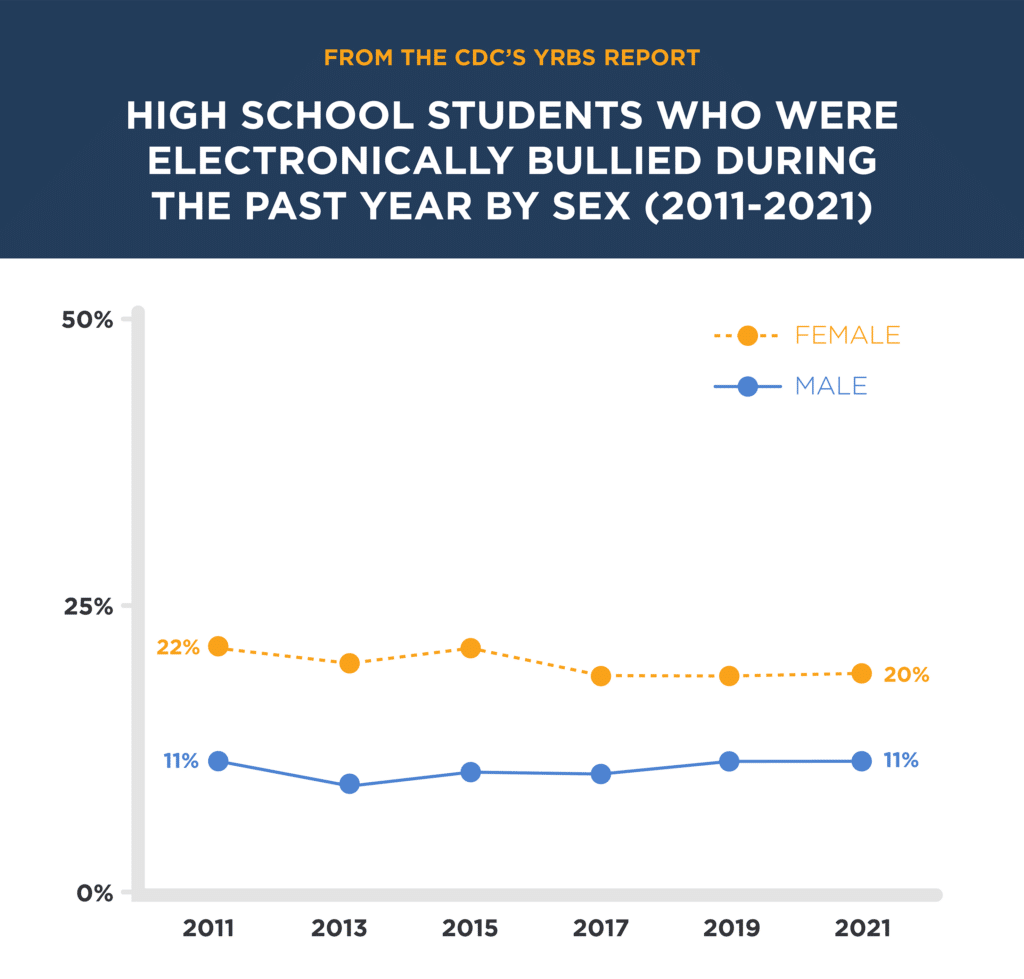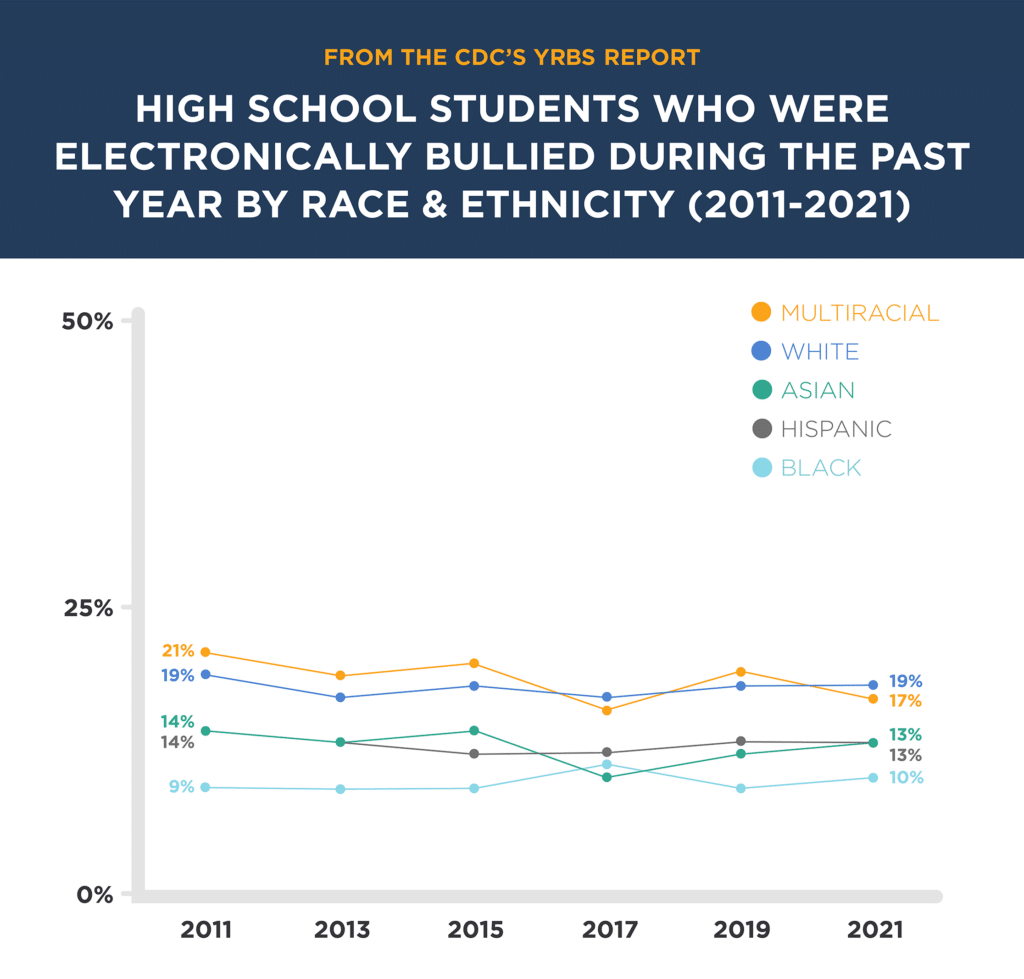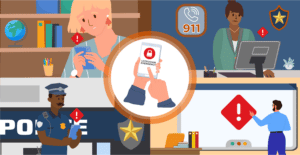Listen to this blog
4 minutes
Generative artificial intelligence (AI) is positioned to impact nearly every facet of our society—and that includes education. But that impact goes well beyond concerns about cheating and plagiarism. With the capability to create realistic images and videos available to anyone with a device, the already-problematic reach of both cyberbullying and online predation has dramatically increased.
Complicating the matter, most policies and laws do not directly address the nuances or the impact of AI-created images. In this largely unregulated environment, it often falls to educators to monitor and protect students from these threats.
A serious threat to student wellbeing
Recent advisories from the FBI highlight the alarming rise of sextortion incidents among school-aged children. Yet another of the FBI’s advisories also underscore the malicious use of AI in exacerbating sextortion. Technology has also given perpetrators new methods to trick children into sending explicit photos or videos—a disturbing shift in the landscape of online threats faced by students.
Further, cyberbullying has also been identified as a pervasive challenge compromising student safety—notably with students using generative AI to create inappropriate images of other students.
The severity of these threats leave us asking: What can schools and parents do to better protect students from these increasingly AI-enhanced threats?
“Students being targeted for sextortion might not speak up because of fear, guilt, and shame. In addition, they view it as their fault. Instead of expecting teens to reach out, look for changes in behavior, emotions, and talk. Is the student still interacting with friends? Are they withdrawn? Are they avoiding activities they once enjoyed? While these low-level concerns might not mean a student is experiencing sextortion, it is a signal for an appropriate educator, like a school counselor to check-in with the student.” Dr. Amy Grosso, Director, Resident Expert at Raptor Technologies
Recognizing Students in Distress
The psychological distress and turmoil experienced by victims of sextortion often prevents them from seeking help. Fear, shame, and confusion drive them into silence and cause long-lasting impact on their wellbeing. Suffering in silence and often enduring continued victimization, some students targeted for sextortion have died by suicide as a result.
The psychological impact of cyberbullying is equally profound, leading to increased anxiety, depression, and suicidal ideation.


Recognizing the signs of a student in distress is the first step to a successful intervention.
Common low-level concerns in students experiencing cyberbullying or online predation include:
- anxiety,
- poor relationships with peers,
- lack of support at home,
- aggression,
- lack of parental involvement,
- worry,
- absenteeism,
- isolation,
- withdrawal,
- irritable,
- avoidance
Training all your staff—including maintenance, food service, and bus drivers as well as teachers and administrators—to recognize these early warning signs means deepening the data pool of adults protecting your students. Providing them with the means to quickly and easily relay their observations and concerns is key to providing your school counselors with the information they need to take action.
The right tool for the job
Preventing school violence, creating safe learning environments and helping students thrive is a big job. The road to success requires proactive measures and tools that can help staff collect and connect the dots well before student behavior requires discipline. It is important to have the right tools and processes in place.
Student Information Systems (SIS) | StudentSafe™ |
Data Management: Collects and manages student data including grade reports, class schedules, and personal information. | Behavioral Monitoring: Allows staff to catalog subtle, concerning behaviors of students. |
Performance Analysis: Analyzes student achievement and tracks academic progress. | Threat and Risk Assessments: Facilitates assessments of threats to harm oneself or others. |
Discipline Tracking: Records discipline actions such as suspensions and expulsions. | Wellbeing Management: Provides a centralized system for managing student wellbeing cases. |
Trend Analysis: Helps schools identify trends across student cohorts to implement corrective measures. | Proactive Interventions: Aids in early detection and intervention before behaviors escalate to discipline issues. |
Administrative Support: Assists in various administrative tasks and reporting requirements of a school.
| Holistic Student View: Offers a comprehensive view of a student’s wellbeing—beyond academic performance. |
Official Student Record: Contains documentation related to students’ formal record. | Proactive—and Private—Student Support: StudentSafe promotes logging low-level concerns about student behavior to identify early opportunities for intervention. Most of this information does not need to be on a student’s official record, so staff sharing these early concerns needn’t worry about impacting formal student records. |
Static Documentation: Student information systems store data related to incident reports and discipline outcomes—documents that do not frequently change or require extensive collaboration. | Dynamic, Collaborative Documentation: StudentSafe is designed to be a collaborative safety management platform. With alerting and notifications built in, StudentSafe supports school staff as they manage student wellbeing. |
Advantages of StudentSafe Over an SIS for Student Wellbeing
- Early Intervention: While an SIS tracks discipline after the fact, StudentSafe enables proactive identification and support for students showing early signs of distress.
- Centralized Behavioral Log: StudentSafe offers a secure, centralized platform for logging and monitoring low-level concerning behaviors, which an SIS might not track.
- Holistic Approach: StudentSafe focuses on the overall wellbeing of students, including those who may not display obvious disciplinary issues but are in need of support.
- Preventing Escalation: By providing timely interventions, StudentSafe helps prevent situations from escalating into discipline referrals, thereby maintaining students’ academic engagement.
- Inclusive Monitoring: StudentSafe captures a broader range of student behaviors, including those of students who are academically successful but may be struggling with mental health issues, which an SIS might overlook.
- Separate from Official Records: StudentSafe is not part of students’ official records—which means staff may be more inclined to share low-level concerns. And it also means a student in crisis does not also have to worry about their formal record displaying their struggle down the road.
Protect your students with StudentSafe
Documenting concerns staff have about a student’s wellbeing requires a system that is both easily accessible and built for security and privacy. To learn more about how Raptor StudentSafe can help you support your students, schedule a free demo.
Related Resources
Guide to K-12 Student Wellbeing
Strategies to Recognize, Document, and Support Students in Distress
Listen to this blog
4 minutes








